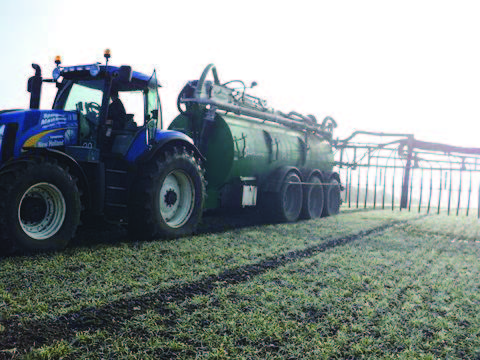“It was only after adding Active NS to the slurry tank that we were able to stir up the tank and empty it sufficiently,” says Martin Holm of Spanggaards Maskinstation, Samsø
Martin Holm has more than 15 years of experience in slurry operations, having been employed at another machine station until he chose to go independent with the establishment of Spanggaards Maskinstation. The equipment must be in good working order for handling slurry, so Martin has invested in a New Holland 8040 tractor, an Ørum GMD 7500 slurry agitator and a Samson PG25 slurry truck, so his operation is well equipped.
But even with all the gear and expertise, there can still be problems with managing a slurry tank. Martin tells us that for years he struggled to get a tank emptied adequately because of stubborn sediment. Starting to add Active NS to the slurry tank loosened the sediment, and then effective agitation made it possible to thoroughly stir up the tank and empty it sufficiently.
Now that Active NS has been added to the slurry tanks, today the product is used only in the housing units. This has made it possible to empty all the tanks this year without any problems.
Active NS generates financial savings “Before emptying the slurry tanks, the tanks are thoroughly stirred to incorporate all the sediment into the floating crust, giving the slurry a uniform consistency.
Earlier, the agitator ran all day, but now it’s enough just to stir the slurry in the morning and in the middle of the day if the slurry is very thick. When it’s time to spread the slurry, it’s more homogeneous than before, too, and it doesn’t sediment as quickly. Another major improvement is that I don’t have sludge in the slurry truck, which saves time and effort cleaning it out.
So, all in all, Active NS gives me, as well as the livestock farmers, financial savings, as it’s become easier to manage the slurry – and I’ve also heard that many of my island neighbours think there’s less odour from the slurry than there used to be when it’s time to spread it on the fields,” Martin Holm of Spanggaards Maskinstation notes.

